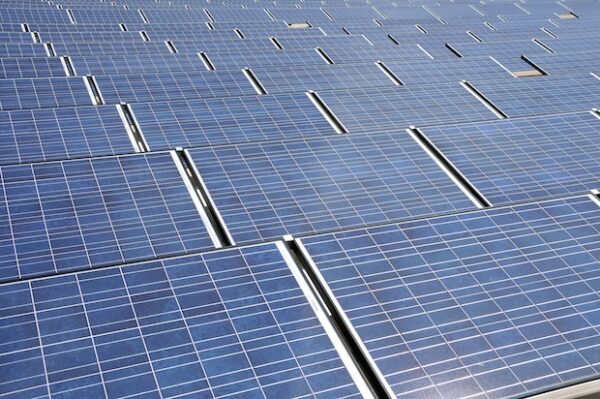
Use of a GaAs thin film between layers may enable solar cell manufacturers to produce stacked cells that can handle high-intensity solar energies without losing voltage at the connecting junctions. Credit: NC State University.
Researchers are working hard on a variety of materials and methods to improve the efficiency and cost-effectiveness of solar photovoltaic cells. One of the best methods for improving efficiency is stacking—literally piling several layers of PV cells one atop another.
According to this news release from North Carolina State University (Raleigh), stacked cells can convert up to 45 percent of the solar energy they absorb into electricity.
The drawback to stacked configurations has centered on the connections between layers. For maximum efficiency, the junctions must avoid absorbing solar energy and siphoning off voltage produced by the cells. Any solar energy converted to heat or siphoned off by the connections wasted as heat or voltage losses is effectively wasted.
NC State researchers have come up with what they believe is a solution to the voltage loss problem that also minimizes blocking of solar energy: A very thin (30 Å) layer of gallium arsenide. The material is already known as an alternative to silicon in solar cell and electronics applications, but the drawback is its relatively high cost, especially as the cost of silicon PV cells continues to decrease.
“We have discovered that by inserting a very thin film of gallium arsenide into the connecting junction of stacked cells we can virtually eliminate voltage loss without blocking any of the solar energy,” Salah Bedair, professor of electrical engineering, says in the release. “Now we have created a connecting junction that loses almost no voltage, even when the stacked solar cell is exposed to 70,000 suns of solar energy.”
According to the release, concentrating lenses are not likely to exceed an energy level equivalent to 4,000–5,000 suns. Thus solar cell manufacturers can build stacked systems able to handle high-intensity solar energies without losing voltage at the connecting junctions.
“This should reduce overall costs for the energy industry because, rather than creating large, expensive solar cells, you can use much smaller cells that produce just as much electricity by absorbing intensified solar energy from concentrating lenses. And concentrating lenses are relatively inexpensive,” Bedair says in the release.
The work is reported online in Applied Physics Letters in a paper entitled “Effect of GaAs interfacial layer on the performance of high bandgap tunnel junctions for multijunction solar cells.” (DOI: 10.1063/1.4819917.)
Author
Jim Destfani
CTT Categories
- Energy
- Nanomaterials


